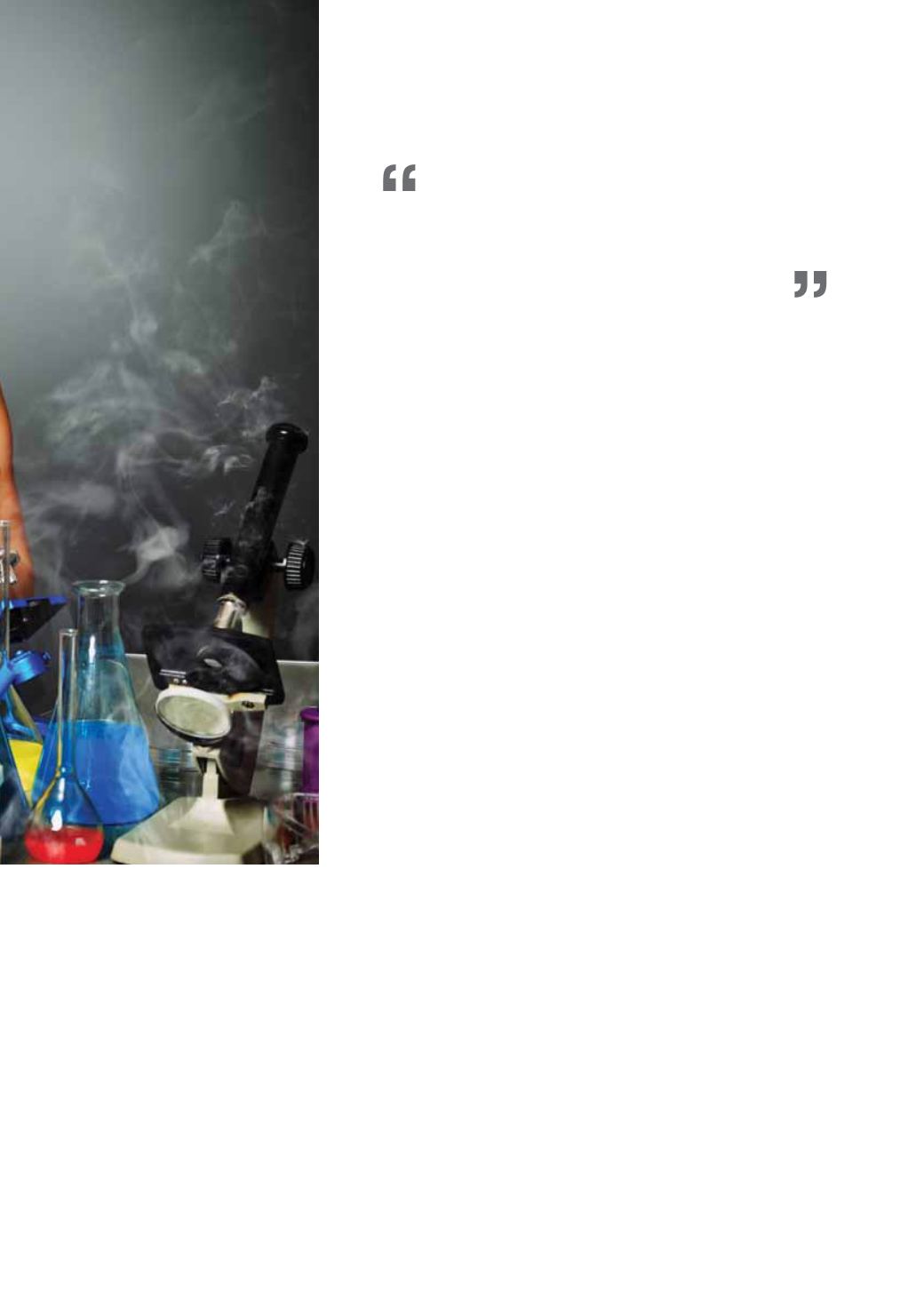
T
here is no doubt that
we are in the midst of a
technological revolution
and the debate is raging
on how our education systems are
responding. In our rapidly changing
technological culture, where a baby’s
education may begin on a tablet
computer and a secondary school
student can sidestep her teacher’s
expertise via an internet that has
made almost every fact instantly
available, we have to ask ourselves
Everybody is a genius. But if
you judge a fish by its ability
to climb a tree, it will live its
whole life believing it is stupid.
~Albert Einstein
if our education expectations are
keeping up.
Experts such as Sir Ken Robinson,
an international advisor on education
who was knighted for his contribution
to education, have repeatedly said
antiquated classrooms are a huge
cause for concern.
Around the world and in Hong
Kong, many of today’s education
systems are based on the familiar
pedagogical framework. In it, the
learning hierarchy and importance
of subjects are as follows: maths and
science at the top, humanities in the
middle, arts on the bottom. This is
an educational hierarchy that was
developed in the 19th century, in
the midst of the industrial revolution
when it was considered the best model
for success.
But that may no longer be the case.
As our children are brought up in
an ever-growing information-based
economy, are we training them in
skills they rarely need while ignoring
those they do?
What’s it all about?
As Sir Ken has said, the key to future
success is an education of creativity.
“You were probably steered benignly
away from things at school when you
were a kid – things you liked – on
the grounds that you would never get
a job doing that,” he says. “ Don’t
do music, you’re not going to be a
musician. Don’t do art, you won’t be
an artist.’ Benign advice which is now
profoundly mistaken.”
Peter Diamandis, space
entrepreneur turned innovation
pioneer and chairman and CEO of
the X Prize Foundation, backs this
claim in his book
Abundance: The Future
is Brighter Than You Think
, writing,
“Teaching kids how to nourish their
creativity and curiosity while still
providing a sound foundation in
critical thinking, literacy and maths
is the best way to prepare them
for a future of increasingly rapid
technological change. Yet our current
education system does little to nourish
this resource.”
So how does this all translate
to an education for our children
in Hong Kong? The good news is
that here parents have a number of
choices for their children’s education.
While the system overseen by the
Education Bureau is largely modelled
on the UK’s education system, other
options include: subsidised schools
affiliated with a charity or religion;
private schools, often attended by the
local financially elite; international
schools, which open up a huge
range of options, from the American
curriculum, to Montessori, to
various bilingual options; and the
English Schools Foundation (ESF),
which adopted the International
Baccalaureate system and offers lower
fees than international schools.
These options are promising,
but the number of schools is low:
according to the 2013 census, there
are almost 1,100 schools in Hong
Kong and more than 1,000 of
them are local government schools.
Thus, competition to secure a
place somewhere other than a local
government school is increasingly
fierce. With waiting lists growing
longer, the applications system is
severely under pressure. The most
common solution to this problem is
standardised testing, which includes a
face-to-face interview, even at primary
’
December 2013
81


